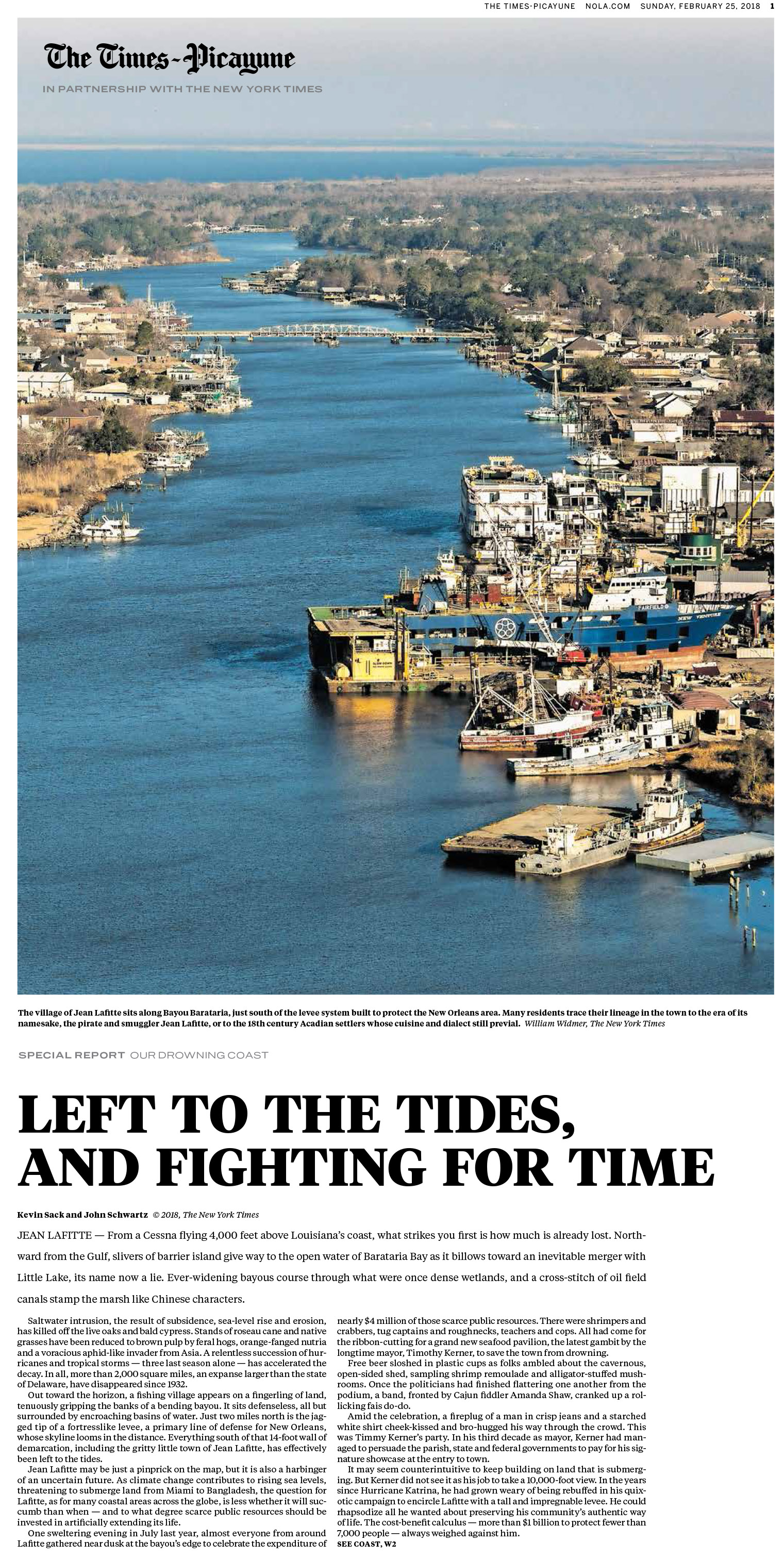“… If we can figure out a model where The New York Times could improve the local press in the country, that could be your side job,” media business writer Ken Doctor suggested to The New York Times’ Dean Baquet in a Nieman Lab story in 2016.
“I would be game,” the Times’ executive editor replied. “It’s a crisis.”
The Times-Picayune, Baquet told Poynter last week in an email, called shortly after.
The result of that call is a 10-month partnership between Baquet’s hometown newspaper and the Times. The two published special sections on coastal erosion in Louisiana online Saturday and in print on Sunday.
NOLA.com | The Times-Picayune announced early last year that it was rebuilding its environmental team with grant funding to cover the coast. The Times-Picayune faces the same challenges that all local newsrooms face, editor Mark Lorando told Poynter in an email.
“Partnering with the Times allowed us to scale the project in a way that would have been impossible were we to go it alone,” he said. “We’ve been talking to our readers about this issue for more than a decade. At some point, it starts to look like ‘another disappearing coastline’ story. We wanted something big and dramatic to get people’s attention, something that would allow us to restart the conversation with a renewed sense of urgency. The collaboration with the Times takes it to another level.”

The partnership means reporting done by the Times-Picayune’s Mark Schleifstein, Tristan Baurick and Sara Sneath and the Times' Kevin Sack and John Schwartz will run in both print publications and online. The two also plan to create a documentary and host a conference on coastal erosion in New Orleans.
This isn’t the first national to local collaboration. The Center for Cooperative Media has a database of collaborations and documented the different ways they work. For the New York and New Orleans journalists, working as a team came naturally, Lorando said.
“Multiplatform enterprise production is pretty complex, though," he said. "Beyond the print special section, which is a huge lift, there are posts and galleries to create, video to edit, homepage modules to build, social media cards to craft, an engagement strategy to develop and execute, and on and on. Trying to sync up that much parallel production 2,000 miles apart is a real leap of faith. I’m amazed at how smoothly the process went, which is a credit to our teams.”
The goal of the collaboration, Lorando said, was to reframe the story of coastal flooding from a looming crisis to an immediate one.
“We think we’ve done that. So for us, what comes next is continuing to report the most important story we’ll ever tell, one day at a time. As for future collaborations, if the NYT or any other respected news organization wants to partner on big New Orleans stories, we’re all in. I think we’ve proven that great local journalism scales.”
Baquet is in for more local collaborations, too.
“The local news organizations have expertise,” he said, “and we have resources."








